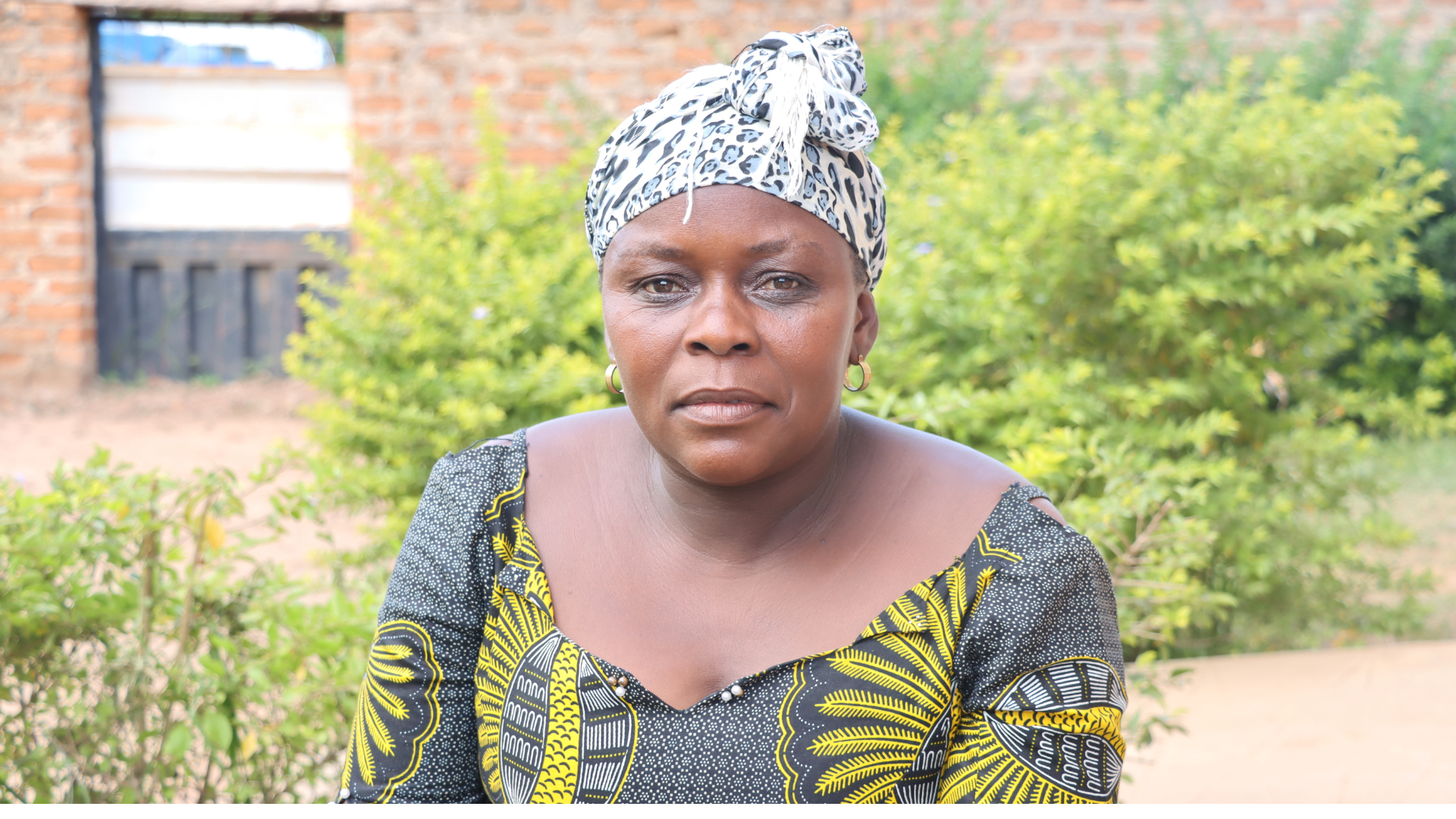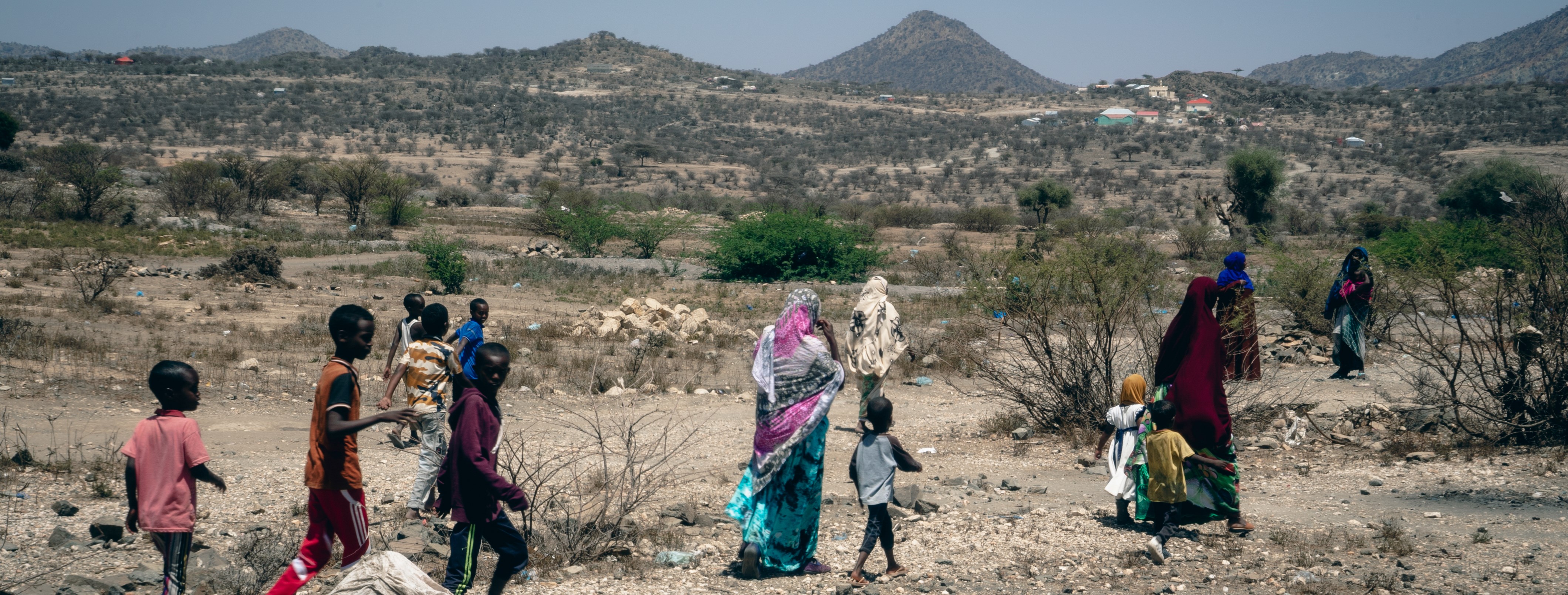When the food began to run out, Solage Manamu knew she couldn’t stay. For years, she had lived in a refugee settlement in northern Uganda with her six children, surviving on shrinking food rations.
Eventually, the supplies stopped altogether. While she didn’t want to leave the camp, hunger and an absence of options, left her no choice.
Like thousands of others, she found her way to Koboko, a small border town near South Sudan and the Democratic Republic of the Congo (DRC), where she finally got a little help to get back on her feet.
A grant from the European Union’s Trust Fund for Africa, and support from a peer savings group alongside women from Uganda, DRC and South Sudan, has allowed her to set up a stall selling kitenges - brightly coloured print fabrics.

While life in Koboko remains challenging, she now earns enough to support her children: “I am able to take care of my family,” she says. “It’s expensive to put my kids through school, and I sometimes feel defeated. But I keep trying and believe I will continue with this business.” The stall in the street market has also helped Solage, who is originally from DRC, connect with the local community.
This business has created a lot of friends. Many Ugandan women are my friends and customers because of the original kitenges from Congo.
At the end of 2024, an estimated 123.2 million people worldwide were forcibly displaced due to persecution, conflict, violence and human rights violations. Among them, 31 million refugees uprooted across international borders.

Uganda hosts over 1.7 million refugees—more than any other African country. In the first half of 2024 alone, more than 69,000 new arrivals fled conflicts in Sudan, South Sudan, the DRC, and Eritrea. As settlements reach capacity and food assistance declines, more refugees are moving to urban areas. They seek work, healthcare, and education for their children.
In Koboko Municipality, an estimated 25,719 refugees and asylum seekers are self-settled, making up over 25% of the total population, according to municipal statistics. In other words, one in every four residents in Koboko is a refugee.
Shared languages and cross-border family ties have all helped smooth refugee integration. Batali Kennedy, Executive Director of UMOJA Rescue Agency, explains: “During the past insurgencies in 1979 and the 1980s in Uganda, many Ugandans fled to South Sudan and the DRC. So when conflict brought South Sudanese and Congolese here, integration came naturally. The borders may be national, but the people share heritage, ancestry, and even family.”
Local organisations have also played a critical role. Refugee-led groups like the South Sudanese Refugees Association (SSURA), the Congolese Refugees Association (CORA), and the host community’s UMOJA Rescue Agency have become trusted intermediaries. They help new arrivals find shelter, access services, and resolve disputes, often stepping in where formal systems fall short.

But the influx has strained Koboko’s already limited resources. Overcrowded schools, underfunded health centres, and restricted access to land or legal support leave both refugees and locals struggling to meet basic needs. For families like Solage’s, life in the city still means a daily battle for stability.Still, the town keeps opening its doors. “Refugees are opportunities that add value to Koboko,” says Mayor Wilson Sanya.
As a former refugee myself, I know the social and economic benefits refugees bring. The future of refugee response is urban. And urban responses must be local.
Koboko is not alone. Across Africa, smaller cities are stepping up and helping the displaced—often without recognition or adequate support. Yet Koboko is showing what’s possible when local leaders, communities, and displaced people create solutions together.

In June 2024, that effort gained momentum with the launch of the Sustainable Urban Integration of Displacement-Affected Communities (SUIDAC) Programme, a €30 million initiative funded by the European Union. Led by Cities Alliance in partnership with nine municipalities and six technical implementing partners across Ethiopia, Somalia, Sudan, Uganda, and the DRC, the programme supports inclusive, city-led responses to displacement.
SUIDAC builds on earlier efforts under the Comprehensive Refugee Response Framework (CRRF) that recognised Koboko’s pioneering leadership. Rather than treating migration as a crisis, SUIDAC promotes inclusive urban planning and community-rooted responses that help cities like Koboko adapt and thrive.
During the programme’s inception phase, a feasibility study led by the Associazione Centro Aiuti Volontari and the Koboko Municipal Council mapped the town’s key needs and service gaps. The result: a locally driven action plan grounded in the real experiences of displaced people and host communities.

Now in implementation, SUIDAC supports improvements in education, healthcare, urban farming, legal aid, and livelihoods. Its goal is to strengthen municipal systems, foster social cohesion, and ensure Koboko has a seat at the table in national and regional policy discussions.
For Solage, the push allows her to survive with hope and dignity. Her story reflects what SUIDAC aims to achieve: turning displacement into opportunity through local action and empowered communities.
As SUIDAC Programme Coordinator, Florence Lozet puts it:
It’s about building systems, relationships, and capacity for the long term—where displaced communities are not just included but empowered, and municipalities have the tools to lead with purpose.




